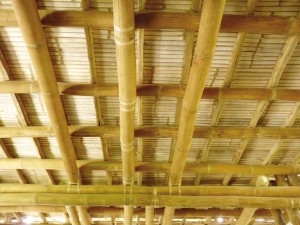
Here is a question: As we find more national and international assistance to restore churches and public buildings damaged by recent earthquakes and killer typhoons, what assistance is available to restore privately owned structures, whether they be of heritage quality or not?
After the 2004 tsunami struck Indonesia, public and religious structures were either restored or reconstructed through national and international assistance.
However, since there was no assistance provided for reconstructing privately owned structures, they were reconstructed quickly and cheaply so today, restored public buildings stick out incongruously from a sea of nondescript architecture. Much of the original urban character of cities was lost.
Is that the way we are headed in our post-disaster reconstruction?
Many privately owned structures, mostly houses and commercial buildings, may not have the heritage value of churches and public buildings, but they nevertheless form an important part of the urban image, and they give identity to a city.
Today cities have visually merged into one generic look: Buildings constructed within the last generation all follow the same generic look. Individual urban identity has all but practically disappeared.
Despite the truth that much of the privately owned heritage in cities today was destroyed long ago, what little of it remains today is severely threatened and deserves a second chance to survive into the future.
Now is the right time to introduce incentives that will induce individual house or building owners to incorporate appropriate architecture and engineering technologies to ensure disaster-resilient public and private structures that are more responsive to earthquake, strong wind and flooding.
Incentives could encourage construction of roofs that harvest rainwater, and provide solar panels for generating power, and promote Smart Growth in cities so people construct new settlements on higher and safer ground, learn to surround communities with trees and vegetation to improve air quality, to replant mangroves along coastal areas, among a few suggestions.
The need to rebuild is an opportunity to be taken advantage of, a time to prepare for the new normal, which now means that changing weather patterns cause a rise in sea levels, more floods and stronger typhoons, intense earthquakes, and even tornados happening with more frequency.
How do we deal with the New Normal?
Environmental architect Joy Martinez says there’s a need for people to “acknowledge and accept” the New Normal as “a fact of life.”
“We must know our ecosystem, acknowledge and accept its inherent services that benefit us, develop the spirit of community resiliency, keep information moving, and share knowledge.
“Architects and engineers need to incorporate the sociological aspects of community life into their designs. A disaster-resilient community is the safest possible community that will have the knowledge to design and build in a natural hazard context.”
All these urgent and demanding retrofitting challenges require capacity building for engineers and architects. It also demands capacity building for communities.
Traditional architecture
Planners, architects and engineers need to take a second look at traditional architecture.
Houses built in the traditional manner, of bamboo and wood with thatched roofs, had a higher rate of survival in the Bohol earthquake than concrete structures which were thought to be technologically more up-to-date.
We should investigate why traditionally constructed structures were resilient enough to withstand the strong earthquake forces and incorporate the traditional methods into new construction.
Engineers should also study historic construction technology developed during the Spanish colonial era to realize that the old buildings had a structural logic of their own which did not rely on steel reinforcing bars as many engineers and architects insist.
The masonry construction of old Spanish colonial houses and churches was done in a manner that achieved structural equilibrium. There are construction lessons to be learned from that era that are applicable to reconstruction today.
It is time to look at rebuilding holistically, to take a serious look at traditional architecture in light of lessons learned from recent disasters and to take all precautions to protect our countrymen better in the future.
Comments are invited to pride.place@gmail.com.